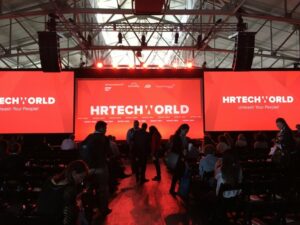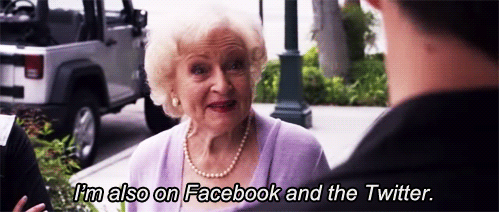 Trust me on this: there are a whole lot of HR conferences out there. The most prominent among them generally tend to be shit shows, where the overwhelming crowds and ubiquitous vendors make getting substantial value difficult if not impossible.
Trust me on this: there are a whole lot of HR conferences out there. The most prominent among them generally tend to be shit shows, where the overwhelming crowds and ubiquitous vendors make getting substantial value difficult if not impossible.
The more niche events also have limited utility, given the fact that their narrowly defined scope limits both the content and conversations, creating something of an insular, often incestuous echo chamber of the same speakers, topics and attendees year in and year out.
For me, conferences in this industry always make me feel a bit like Goldilocks: they are either too big or too small, too esoteric or too mundane, but it’s exceedingly rare to find one that’s just right, particularly in an industry where there are a handful of dominant event organizers who haven’t moved the needle – or their business model – in the decade I’ve been in this business.
Most of the time, it’s same shit, different hashtag.
The Old World: Why Traditional HR and Recruiting Events Suck.
 This is why this week’s SHRM Annual Conference – the most ubiquitous of all industry events – will have an agenda dominated by sessions on Millennials, social media, employee engagement and other topics that lost their relevance about the same time as the “competency based” credentials SHRM adopted in a blatant attempt to vertically monopolize an entire industry (or at least the Michael Kors clutching, Spanx wearing, risk averse masses, pun unintended).
This is why this week’s SHRM Annual Conference – the most ubiquitous of all industry events – will have an agenda dominated by sessions on Millennials, social media, employee engagement and other topics that lost their relevance about the same time as the “competency based” credentials SHRM adopted in a blatant attempt to vertically monopolize an entire industry (or at least the Michael Kors clutching, Spanx wearing, risk averse masses, pun unintended).
Similarly, the HR Technology Conference – sans my very first ever speaking appearance this year, so there’s hope yet for that agenda – will, inevitably, feature the same staid enterprise software providers rolling out the same customer success stories and trying to build buzz and hype around stuff like product updates, which, let’s face it, is a Quixotic effort at best.
This has proved lucrative, with a pricing model designed to marginalize, or fully preclude, the most interesting emerging technologies or innovative, disruptive kinds of content that actually showcase what’s new and what’s next in the industry – and you can’t blame them, considering the Oracles and ADPs of the world are still willing to shell out big bucks to own the ecosystem and expo floor.
They throw lavish parties and feature elaborate giveaways, money that certainly would be better spent on R&D, or at least end user enablement, but instead goes to trying to keep up with their Tier One competition, to the detriment of any vendor trying to actually get heard above the white noise these companies inevitably create as a smokescreen to mask the fact that, well, their products kind of suck.
I’m looking at you, Workday Recruiting.
The United States of Stasis: Letting Go of The Status Quo.

There must be a happy medium between being all things to all people (or at least all those with enough budget to spend on inordinately priced systems and software) and being so hyper-focused on an industry, vertical or function that the conference ignores the bigger picture and ecosystem in favor of insularity and self-congratulatory validation.
For example, a sourcing conference will feature a bunch of content and conversations on how to build the best Boolean Strings, but without asking: why are we still wasting our time on this shit?
Similarly, user conferences are often circle jerks where current customers pay thousands of dollars for the privilege of getting some face time and product updates from their current vendor without ever learning what else is out there, or learning which point solutions, services or implementations might help those systems work even better – unless, of course, said third parties pony up enough cash to set up a booth that no one bothers stopping by in the first place. They’re there because work is paying them to take a vacation, and the booze is free.
Fair enough.
But when it comes to “just right,” your choices as a practitioner, or vendor, are few and far between, despite a packed calendar of events that tend to align with one of these two diametrically opposed philosophical polarities.
After last week’s HR Tech World in San Francisco, however, I walked away encouraged that finally, someone infused the staid conference circuit with an event that added value to both vendors as well as buyers, whose content was both focused and forward looking, and whose expo hall conversations largely centered around collaboration instead of competition, partnerships instead of product roadmaps.
That it was the US debut for this formerly European centric event made the execution even more impressive, because I walked away intrinsically believing that the formula the Budapest based brains over at HRN have developed is exactly what the US market needs: actual innovation and disruption, rather than the commoditization of these terms within an existing and staid framework.
3 Reasons Why Every Talent Leader Should Attend HR Tech World.

From the pre-conference sessions, which featured the chance to listen to early stage startups pitch product for investors and attendees, to the keynotes with actual technology experts, not “HR Technology Thought Leaders” (there were a few of those, but fortunately, minimized and mostly kept off the main stage), to the carefully maintained vendor/buyer balance in attendance (not too many sleazy sales guys, not too many boondoggling business partners), HR Tech World consistently delivered real value to everyone involved, no matter what part of the world of work they happened to work in.
It was a refreshing change from the same old shit, and I think this has to do with three primary factors:
1. The Full Stack.
The show was more focused on tech than HR Tech, which, let’s face it, is way more interesting. This maybe why Oracle was conspicuously absent, although ADP did roll out their full trade show army featuring “ADP in Virtual Reality,” and the punchlines there kind of write themselves.
The companies that got the most buzz – and actually had lines of buyers there to learn about the product, instead of a smattering of attendees responding to some cheeseball promotion or Shanghaiing by a salesperson – were actually the smaller, less established players lining the walls.
These included companies like Textio (disclosure: I am an advisor for Textio, and they killed it), Expensify (one of my favorite business apps, and one that’s not a usual suspect at HR shows) and Culture Amp, who coincidentally announced a $20 million dollar Series C round during the show, and rightfully so.
Sure, there were the IBMs and Workdays of the world in attendance, but given the focus, their all sizzle, no substance activation just didn’t seem to work, particularly with emerging players like Lever, Ascendify and SmartRecruiters, among others, nearby.
The VC backed startup products spoke for themselves, without the carnival barkers and giveaways. And I know that many new and exciting entrants into what’s becoming a pretty crowded category finally got onto the radar of the kinds of decision makers they wouldn’t normally have direct access or visibility to.
One of the genius parts of the set up for HRN events, unlike, say, the 8.5 mile walk between sessions and the expo hall at the Venetian for a certain other HR Technology Conference, is that in order to go to the conference keynotes and sessions, attendees had to walk through the entire expo floor to get there.
Just like going into a grocery store to buy milk, the placement precipitated a few unexpected discretionary purchases or unplanned demos that might otherwise have never happened if, as is usually the case, vendors were treated as second class citizens or restricted to a designated area apart from the actual agenda.
This democratization of technologies, coupled with the carefully managed ratio of vendors and buyers, was refreshing, and likely forced more than a few major employers to rethink their RFP process.
It’s hard to see the forest through the trees sometimes, especially when those trees are 30×30 booths with flashing lights and huge LCDs playing product videos on repeat, but this was definitely a green field, by comparison – and one that I think everyone appreciated.
2. It’s A Small World, After All.
 American companies seem to believe they have a certain hegemony over global business, thinking of, say, APAC and EMEA as the serfs to their centralized fiefdom, and thus approach HR – and HR Technology – with a certain jingoistic sense of insularity.
American companies seem to believe they have a certain hegemony over global business, thinking of, say, APAC and EMEA as the serfs to their centralized fiefdom, and thus approach HR – and HR Technology – with a certain jingoistic sense of insularity.
This is painfully evident at shows like SHRM, where half of the vendors and a ton of the content are geared around compliance with asinine US laws like OFCCP or GINA, where culture means “EB collateral” instead of regional and market variances, and where diversity is positioned as a regulatory and risk management issue instead of a business imperative and facilitator of actual innovation, instead of simple reiteration.
The exception to this, for some reason, is India, but despite SHRM’s presence in this market, the fact is that the back office looks more or less the same no matter what market you’re in, Bangalore looks a lot like Boston when you’re talking about payroll or benefits administration.
Of course, the major difference between the two markets is you cannot compete in India without a mobile first product, but there’s money to be made from this rapidly Westernizing market, and money to be saved from offshoring and outsourcing, which means that for SHRM, India seems like an arranged marriage made in heaven, down to the worship of cows (I’ll leave that there).
As much as our current administration and our limited exposure to other countries and cultures makes us forget that we’re not alone in business (the US has the lowest percentage of citizens with passports in the first world), globalization is a fact, and the global workforce has increasingly made even the most insular of companies into functional multinationals.
We must look outside our borders to the rest of the world, rather than living in our world where HR leaders largely mitigate the risk of compliance violations instead of collect the rewards of localization and decentralization.
That’s why HRN’s roots outside the United States may well prove to be one of its greatest assets – the global viewpoint of a company based in Hungary, whose previous conferences have been in the Netherlands, the UK and France, was clearly evident at HR Tech World Congress.
There was more talk about data privacy and SaaS security than OFCCP documentation and the theoretical construct of “the cloud,” and less talk about getting a seat at the table and more on how to eliminate the need for the table in the first place to best support and enable a multinational workforce.
Many major US HR Technology companies, like Glassdoor, have only recently started building a beachhead in Europe, with boots on the ground to challenge formerly insulated, niche market players like Job & Talent or Career.Ru.
These companies must learn about the other type of business culture to successfully compete – and win – across the pond, which makes the content and conversation at HR Tech World particularly valuable, given its international roots and representation from many vendors not normally seen on these shores (What the Hell is Harver?).
Conversely, many European companies are looking at the immense US market (we’re still the world’s biggest economy, despite our current and concerted efforts to cede that title). This trend is evidenced by such moves as Randstad’s acquisition of Monster, SmartRecruiters rapidly growing market share and acquisitions of EU startups explicitly for the purposes of brining them to US buyers, and the emergence of German player Kununu as a potentially viable contender/alternative to Glassdoor, which has been more or less an undisputed monolith within the employee review space for a decade now.
HR Tech World does a brilliant job of bridging these two worlds, and as “employee experience” becomes the newest buzzword in our industry, the experience of this event seems to be more “It’s a Small World After All” than Mainstreet, USA.
3. Keeping It Real, Not “Authentic.”
 Maybe it was its location in Fort Mason, with its sweeping views of the San Francisco skyline, Alcatraz and the Golden Gate Bridge, the perfect weather or the presence/proximity of so many VC investors, startups and tech company buyers, but this conference felt a whole lot like it was built by and for a different generation, one that abhors the term “Millennial” even as we become a majority of the workforce.
Maybe it was its location in Fort Mason, with its sweeping views of the San Francisco skyline, Alcatraz and the Golden Gate Bridge, the perfect weather or the presence/proximity of so many VC investors, startups and tech company buyers, but this conference felt a whole lot like it was built by and for a different generation, one that abhors the term “Millennial” even as we become a majority of the workforce.
Most of the time, if you’re under, say, 40, HR conferences have no chill, which is why you see so many coats and ties, people taking notes via pens and paper (WTF is that?) and heavy promotion on Facebook, the only social network those of a certain, er, “overqualified profile” generally pay attention to or use for their own purposes.
The social element is inevitably awkward, like going to a cocktail party at your grandparents’ house, ubiquitous white people wedding music and total lack of irony or self-awareness at stuff like posing for pictures so it looks like they’re on the cover of some shitty trade magazine, or taking time for photo ops with job boards’ anthropomorphic mascots. Not so at HR Tech World.
From the EDM music between the sessions (look it up, SHRM members – and thank God it wasn’t that damn Pharrell song over and over), to the vulgar, direct and demotivational opening keynote by none other than Gary Vaynerchuck, someone who is unlikely to ever get, say, an Oracle HCM World crowd jazzed about their jobs or able to ignore the profanity and learn what “transparent” and “authentic” really mean, the vibe at this conference, was, well, different.
It felt a whole lot like the future, instead of, say, the WorkHuman or SHRM events bookending HR Tech World Congress, who, if the hashtags were any indication, were sort of a blast from the past, apropos for a profession stuck in the status quo and unable to even iterate, much less innovate. No one takes you seriously when you’re morbidly obese and in charge of wellness programs, but apparently few HRBPs have gotten this memo to date.
In short, HR Tech World proved to be just as successful in its approach and philosophy as it has been in Europe, where in a few short years, it’s become the go-to show for everyone in the industry (and beyond), not to mention the fastest growing trade show in our space, while many others are actually declining in significance, scope and overall attendance. That’s because in a world of same shit, different hashtag, this conference was something altogether different.
And all I can say is, thank God for that – and I’m already looking forward to next year’s US edition of HR Tech World. In the meantime, we’ll always have Vegas.
Authors
Matt Charney
Matt serves as Chief Content Officer and Global Thought Leadership Head for Allegis Global Solutions and is a partner for RecruitingDaily the industry leading online publication for Recruiting and HR Tech. With a unique background that includes HR, blogging and social media, Matt Charney is a key influencer in recruiting and a self-described “kick-butt marketing and communications professional.”
Recruit Smarter
Weekly news and industry insights delivered straight to your inbox.





